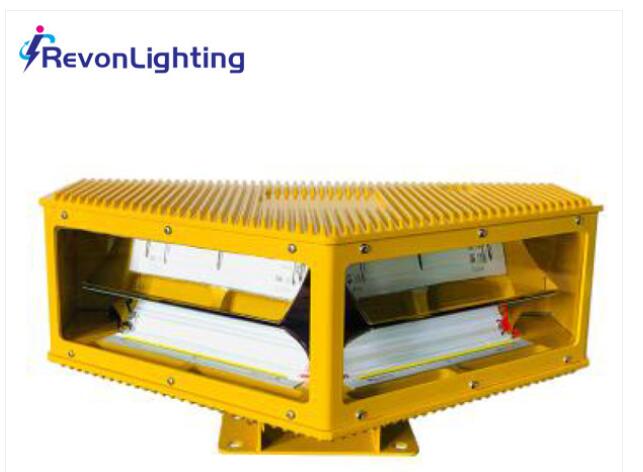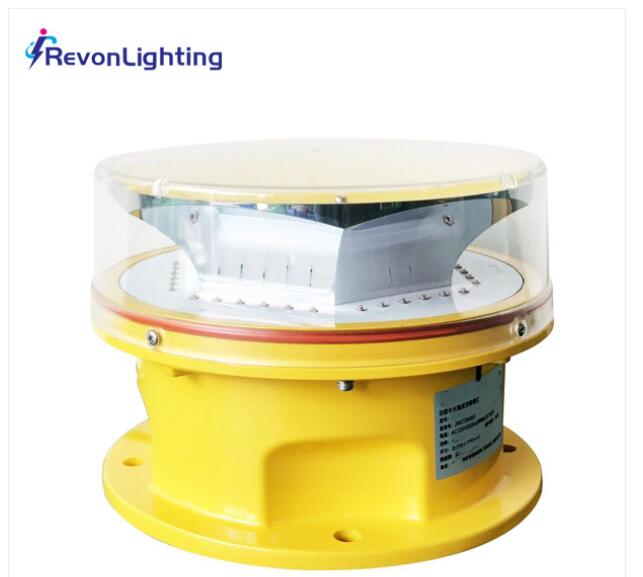In the complex landscape of aviation safety, ensuring that all potential obstacles are clearly visible to pilots is essential. Aviation lights play a pivotal role in marking structures that could pose a threat to aircraft, such as chimneys and wind turbines. This article delves into the importance of aviation light for chimney and aviation light for wind turbine, examining their characteristics, benefits, and the technological advancements that have enhanced their effectiveness in promoting aviation safety.
Aviation Light for Chimney
Chimneys, particularly those associated with industrial plants and large buildings, can pose significant hazards to low-flying aircraft. Aviation lights for chimneys are crucial in marking these structures to prevent accidents and ensure safe navigation.

Characteristics of Aviation Light for Chimney
High-Intensity Illumination: Aviation lights for chimneys are designed to emit bright, intense light that is visible from long distances. This high-intensity illumination ensures that pilots can easily spot these structures even in poor visibility conditions such as fog, rain, or at night.
Color and Flashing Patterns: Typically, these lights use red or white colors. Red lights are often used at night to avoid blinding pilots, while white strobe lights may be used during the day. Flashing patterns, such as steady burn or pulsating lights, enhance visibility and distinguish these lights from other sources of illumination.
Durability and Weather Resistance: Given the exposure to harsh environmental conditions, aviation lights for chimneys are constructed from robust materials that can withstand extreme temperatures, wind, rain, and snow. They are built to be durable and maintain consistent performance over time.
Energy Efficiency: Modern aviation lights for chimneys often utilize LED technology, which provides bright illumination with lower energy consumption compared to traditional lighting options. LEDs also have a longer lifespan, reducing the need for frequent replacements and maintenance.
Benefits of Aviation Light for Chimney
Enhanced Safety: By marking chimneys and similar structures, aviation lights significantly reduce the risk of aircraft collisions. This is particularly important in areas where industrial structures are located near flight paths or airports.
Regulatory Compliance: Aviation lights for chimneys help ensure compliance with aviation safety regulations set by authorities such as the FAA (Federal Aviation Administration) and ICAO (International Civil Aviation Organization). These regulations often mandate the installation of obstruction lights on structures exceeding specific heights to maintain safe airspace.
Cost Savings: The use of energy-efficient LEDs reduces electricity consumption and maintenance costs. The long operational life of these lights further contributes to cost savings by minimizing the frequency of replacements and repairs.
Versatility: Aviation lights for chimneys can be adapted to various types of industrial structures. This versatility makes them an essential tool for marking a wide range of obstacles in different environments.
Aviation Light for Wind Turbine
Wind turbines are increasingly common as the world shifts towards renewable energy sources. However, these tall structures can pose significant risks to aviation if not properly marked. Aviation lights for wind turbines are essential for ensuring these structures are visible to aircraft.
Characteristics of Aviation Light for Wind Turbine
High-Intensity Lighting: Aviation lights for wind turbines are designed to emit high-intensity light that is clearly visible from great distances. This is crucial for marking these tall structures and ensuring that pilots can detect them from afar.

Color and Flashing Modes: Similar to aviation lights for chimneys, these lights often use red or white lights depending on the time of day and visibility conditions. Flashing patterns are employed to make the lights more noticeable and to help differentiate them from other light sources.
Robust Construction: Aviation lights for wind turbines are built to withstand severe weather conditions, including heavy winds, rain, and extreme temperatures. The materials used in their construction are chosen for their durability and resistance to environmental stressors.
Energy Efficiency and Longevity: Many aviation lights for wind turbines use LED technology, which offers high brightness and efficiency while consuming less power. LEDs also have a longer operational life, reducing maintenance requirements and associated costs.
Benefits of Aviation Light for Wind Turbine
Improved Navigation Safety: By marking wind turbines and other tall structures, aviation lights enhance the safety of aircraft operations. This is especially important in areas where multiple obstacles are present or where air traffic is dense.
Regulatory Compliance: Aviation lights for wind turbines help ensure compliance with safety regulations governing the marking of tall structures. Adherence to these regulations is critical for maintaining operational licenses and avoiding potential fines.
Cost Efficiency: The use of LED technology in aviation lights for wind turbines results in reduced energy consumption and lower maintenance costs. The extended lifespan of LEDs further contributes to long-term cost savings.
Adaptability: These lights are suitable for a wide range of wind turbines and other elevated structures, making them a flexible solution for various industries, including renewable energy.
Technological Advancements
Both aviation lights for chimneys and aviation lights for wind turbines have benefited from significant technological advancements, enhancing their effectiveness and reliability.
1. LED Technology
The adoption of LED technology has revolutionized the aviation lighting industry. LEDs provide bright, consistent illumination with lower power consumption and longer lifespan compared to traditional lighting technologies. This advancement has led to cost savings and improved performance.
| aviation light for chimney | aviation light wind turbine |
| 13 | 14 |
2. Smart Control Systems
Modern aviation lights often feature smart control systems that allow for remote monitoring and adjustment. These systems can optimize light intensity based on ambient conditions and provide real-time diagnostics, reducing maintenance costs and improving reliability.
3. Solar Power Integration
The integration of solar power into aviation lights has led to the development of solar-powered models. These lights use solar panels to harness energy during the day, which is stored in batteries for use at night. This provides a sustainable and cost-effective solution, particularly in remote or off-grid locations.
4. Enhanced Durability
Advances in materials science have resulted in more durable and weather-resistant aviation lights. Modern designs feature UV-resistant coatings, corrosion-resistant materials, and impact-resistant structures to withstand harsh environmental conditions.
5. Integrated Systems
Some modern systems integrate both aviation lights for chimneys and wind turbines into a cohesive network. This integration allows for coordinated operation and improved control, enhancing overall safety and efficiency.
Conclusion
Aviation lights for chimneys and wind turbines play a crucial role in ensuring aviation safety by marking tall structures and obstacles that could pose a risk to aircraft. These lighting systems provide reliable, cost-effective, and environmentally sustainable solutions for enhancing visibility and preventing collisions. Technological advancements, such as LED technology, smart control systems, and solar power integration, have further improved their effectiveness and efficiency. As the aviation industry continues to prioritize safety and sustainability, the importance of these lights will only grow, contributing to a safer and more efficient airspace. By integrating advanced technologies and maintaining high standards of visibility and durability, aviation lights for chimneys and wind turbines will continue to play a vital role in safeguarding the skies.